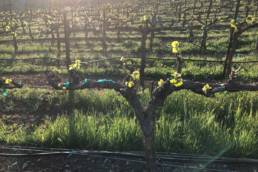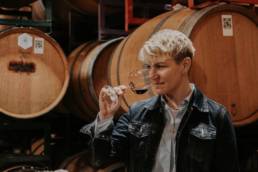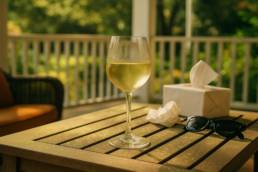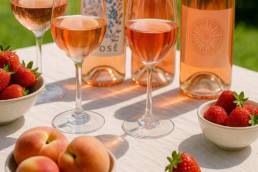FMN – January 2024 – A Temperate January
Every year I hear this incessant squawking about refraining from alcohol consumption for a month after New Years. I believe the upstart heathens call it “Dry January.” The nature of this ridiculousness is you can somehow make up for 11 months of thoughtlessly pouring alcohol in your gobs by abstaining for one month.
Although, in past seasons, I have rebelled against this notion by even increasing my consumption during January. This year, being a little older and arguably slightly wiser, methinks my prior behavior may have been a bit unfounded. For that reason and due to my resolution of climbing a few rungs up the ladder closer toward self-actualization, I am somewhat embracing the idea that I have formerly scorned.
You may cease the gasping and pick your chins up from the table as I will, indeed, be consuming alcohol in January but with one caveat. My nod to this Dry January will be one of temperance not abstinence. So, I will reluctantly make the sacrifice to consume wines that are “lower” in alcohol, less than 13%, for the entire month. Not wanting to change the definition of the already established holiday, I have named my prospective endeavor, “Moist January.”
As not to add needless delays to our temperance, we will begin with sparkling wine in our glasses for the New Year’s toast. As we continue to sip after midnight, with most sparkling well below our threshold, we remain compliant with our restrained consumption laws.
Bubbles
Although many of you will choose a variety of bubbles, traditional method and otherwise, I will be sipping some (good) Prosecco. With large quantities of inexpensive, barely quaffable fizz pushed into the market as quickly as possible to meet demand, most consumers believe all Prosecco is the same. This misconception has damaged the Prosecco brand and the market for quality-driven producers. Likewise, the sparkling wine from Spain, Cava, is suffering a similar fate.
White
In regards to our white wine consumption, we should be able to stay under temperance level with relative ease. I usually increase my imbibement of white wine in January accompanying my appetite for anything from the sea. The popular choices of Chablis, Albariño, or even Melon de Bourgogne all work well with ocean creatures but I m going counterintuitive with my highlighted selection of Alsatian Riesling.
You’ve already generated that mental connection between sweet wine and Riesling, and you are not entirely incorrect. Riesling has the flexibility to produce wines from sparkling to still, and dry to sticky sweet. As a grotesquely broad generalization, the lower alcohol Rieslings tend to have a higher residual sugar, but not always. When labeled “dry”, Alsatian Rieslings are usually less perceptively sweet and fuller in body versus their German and Austrian counterparts, making them a sneaky good pairing for all that January seafood we are planning to crush.
Rosé
I drink rosé wines during every season throughout the entire year. Rather than go down the proverbial rabbit hole diatribe explanation of rosé wine, suffice it to say that all rosé is far from the same. In my humble opinion, this is not the month for the alcoholic pink strawberry water often cleverly marketed as Provencial rosé. Not to be misunderstood, I enjoy these wines chilled heavily and poured frequently when by the pool in the Sahara heat of our summers, just not with the condensation of my breath.
Although some of the meatiest rosé wines are made in the region of Bandol, France, I wanted to show that these sturdy styles of rosé can be discovered in some overlooked places, and stay under 13% abv. A wine fitting these parameters leads me to a cooler climate with skillful viticulture and masterful winemaking.
The Finger Lake area of New York State checks all of our boxes and is too often not even brought up in the rosé conversation. Varieties from Vitis vinifera like Cabernet Franc, Pinot Noir and Lemberger (Blaufränkisch) as well as hybrids like Rosette can all be found making up these routinely dry styles of rosé. After tasting different rosé from all over the world, honestly, at least two of my top ten are from this region.
Red
Fret not you red-wine-only drinkers, I have not forsaken you. Finding some good red wines under 13% can be a bit more challenging, but not impossible. Wines like Valpolicella, Chianti, young Rioja, and Pinot Noir all have examples at or below 13% abv (alcohol by volume). For value, versatility and wine geekiness I am pouring 100% Gamay in the way of Beaujolais.
The Gamay grape is incredibly versatile in that it readily expresses terroir and can range from the powerful and ageable to the fresh and elegant. These wines have one of the broadest ranges of food pairing abilities. With their crunchy acidity and interesting fruit aromatics, you can put these wines on the table with everything from cured meats and cheeses, turkey, Korean barbecue, fatty fishes and even glazed ham.
Some of the lighter Beaujolais Cru wines, like Fleurie, would suffice but with my post-holiday wallet a bit tattered I chose the Beaujolais Village level. With a good producer, some of these Villages level wines, can supersede the quality level of some of the Cru Beaujolais wines, at a fraction of the cost.
If you are feeling the pressure of FOMO for abstinence in January, I welcome you to adopt my temperance idea for your introspection. Not only will you feel included in these mob activities, but you will be much happier than your teetotaling cohorts. With some grass roots marketing, we might even be able to get the idea to catch on with a clever catchphrase: “Make January Moist”.
Suggested Wines
Guisti Asolo Prosecco Superiore DOCG Brut NV Asolo, Italy $20
One first notices the small persistent bubbles in this wine. The nose has a complexity with orchard fruit (apple, pear, peach), floral (apple blossom), and a slight toasted pastry crust note. The palate is perceptibly dry, even with 7 g/L of residual sugar, due to the bight acidity. The mouth-caressing bubbles give way to flavors of orchard fruits but with an additional citrus component (persimmon) and the baked pastry finish. Pair this wine with marinated shrimp, creamy cheeses (goat), and seared scallops.
Rosacker Riesling Alsace Grand Cru DOCG 2020 Alsace, France $25
The wine has aromas of orchard fruit (pear, peach), citrus pith (lemon), and a wet stone note. The palate is dry with mouth-watering broad acidity and a noticeable viscous body. There are flavors of tart apple and pear, citrus (tangerine), citrus pith and a saline mineral-laden finish. This is a classic example of a sexy Alsatian Riesling. Pair with grilled sea bass, smoked fish dishes (or dips) and ceviche.
Kelby James Russell, Cab Franc Rosé 2022 Finger Lakes, NY $25
Don’t let the electric pink color fool you as this is a sturdy rosé of Cabernet Franc. The nose has aromas of cherry, cherry pit, watermelon, blood orange and a “sticking plaster” note. The palate is dry with up front citrus driven acidity, a medium body and a slight pleasing perception of tannin. The flavors are more toward the citrus (tangerine, blood orange) versus the red fruit on the nose with an added raspberry leaf. The wine is structured with a savory feel about it. Pair with grilled lobster, shrimp cocktail, or barbecue chicken.
Mary Taylor Marine Descombe Beaujolais Villages AOC 2021 Beaujolais, France $22
This example shows the attainable quality of a Villages level Gamay. The nose bursts with fresh fruit (blackberry, raspberry, blueberry, cassis), blackberry leaf, woody herbs, green peppercorn, violets and fresh crushed stone. The dry palate has a crunchy acidity and medium body. The tannins are present but fine grained and well-integrated. Flavors of red currant, black raspberry, cranberry wrapped in a woody herbal embrace gives way to a slightly stony, chalky finish. The versatility of this wine allows you to pair with seared tuna, roasted turkey, or even veal.




